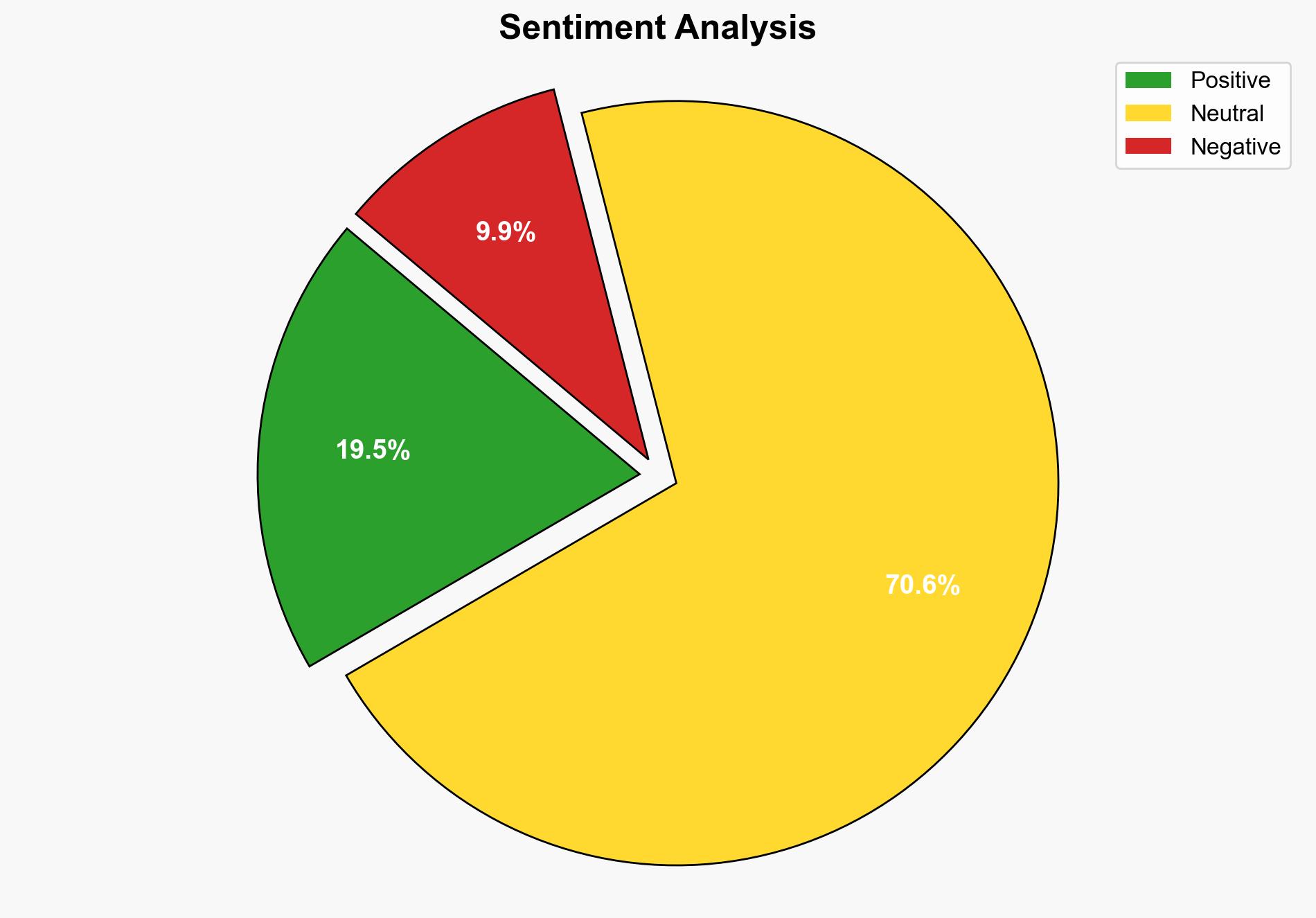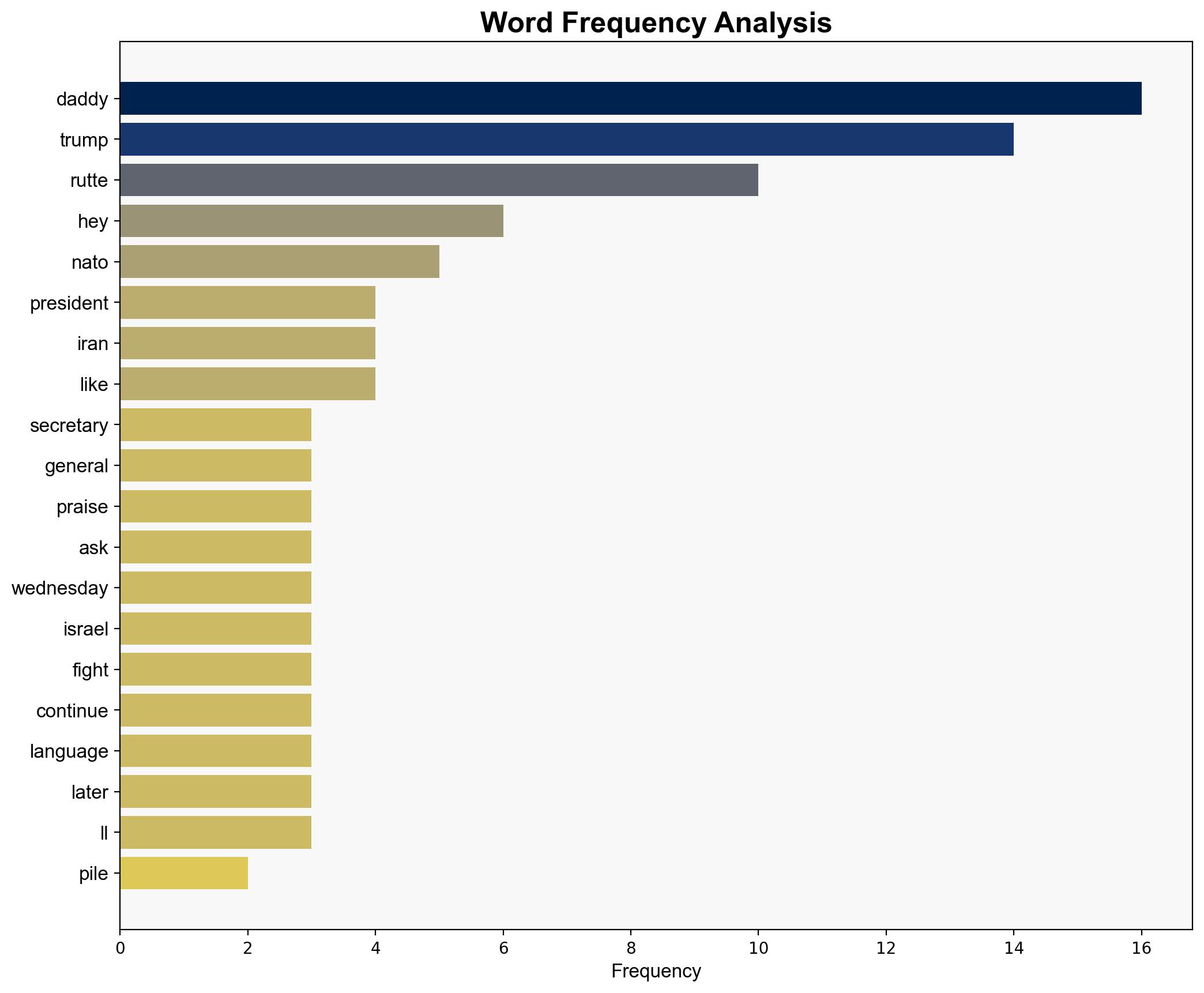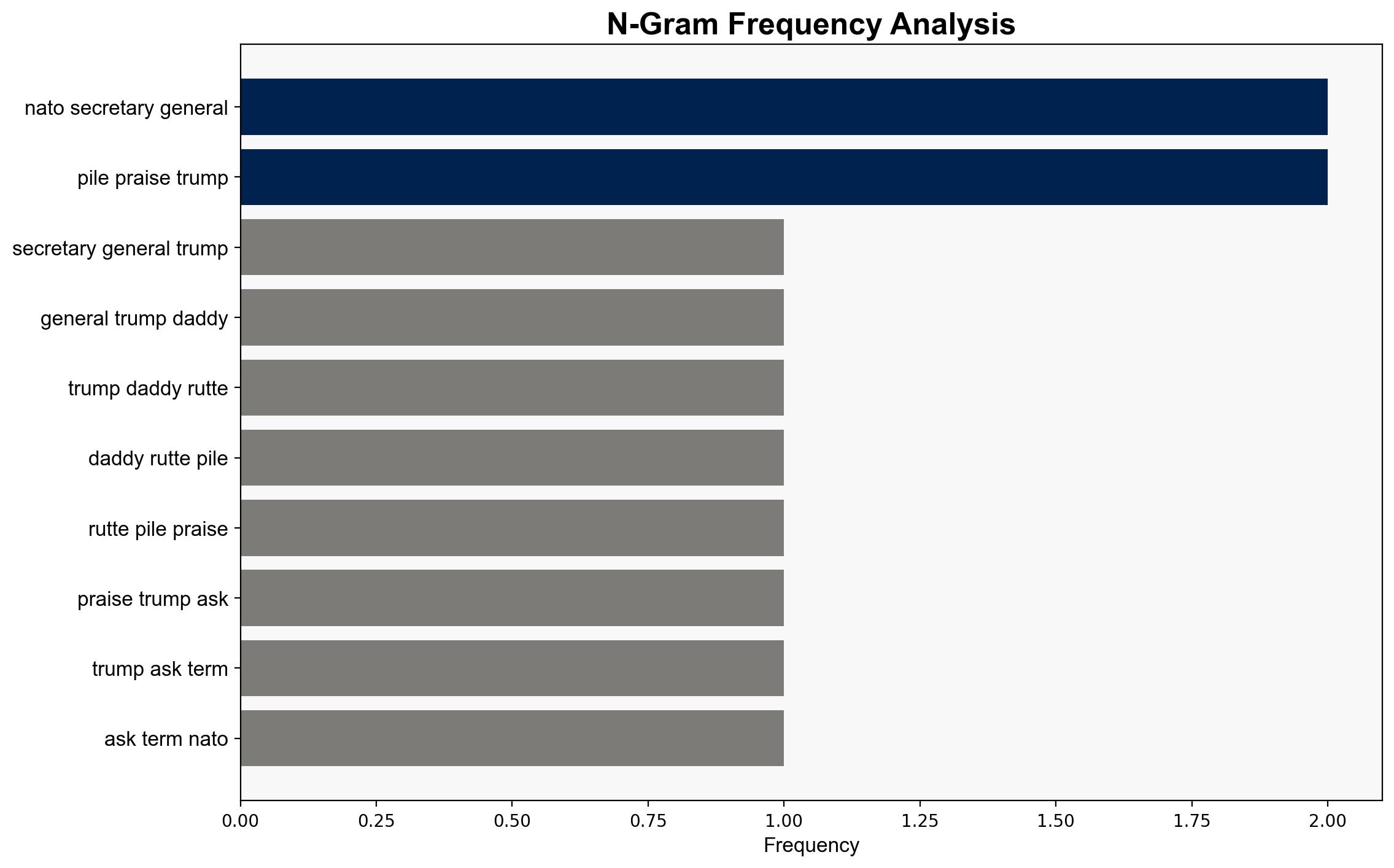NATO secretary-general calls Trump ‘Daddy’ – ABC News
Published on: 2025-06-25
Intelligence Report: NATO secretary-general calls Trump ‘Daddy’ – ABC News
1. BLUF (Bottom Line Up Front)
The recent interaction between Mark Rutte and Donald Trump at the NATO summit, where Rutte referred to Trump as “Daddy,” highlights a complex dynamic in international relations. This term, used metaphorically, suggests a paternalistic view of the U.S. role within NATO. The incident underscores the need for careful diplomatic communication and may influence perceptions of U.S. leadership among NATO allies. Recommendations include monitoring shifts in alliance dynamics and addressing any potential misinterpretations that could affect strategic partnerships.
2. Detailed Analysis
The following structured analytic techniques have been applied to ensure methodological consistency:
Causal Layered Analysis (CLA)
At the surface level, the event is a light-hearted exchange; however, it reflects deeper systemic structures where the U.S. is seen as a dominant force within NATO. The worldview suggests a hierarchical relationship, with the U.S. as a guiding figure. The mythological layer portrays the U.S. as a protective leader, akin to a family head.
Cross-Impact Simulation
The exchange may influence regional perceptions, potentially affecting diplomatic relations. Allies may reassess their positions, leading to shifts in alliance cohesion. The metaphorical language could also impact negotiations on military and economic cooperation.
Scenario Generation
In a best-case scenario, the incident strengthens U.S.-NATO relations by reinforcing leadership roles. In a worst-case scenario, it could lead to misunderstandings and reduced trust among allies. The most likely scenario involves minor adjustments in diplomatic language to prevent future misinterpretations.
3. Implications and Strategic Risks
The paternalistic metaphor may create a perception of unequal partnerships, potentially leading to friction within NATO. This could manifest in reduced cooperation on joint initiatives or reluctance to align with U.S. policies. Additionally, adversaries may exploit perceived divisions to weaken the alliance.
4. Recommendations and Outlook
- Encourage diplomatic channels to clarify the metaphorical intent and reinforce mutual respect among NATO members.
- Monitor alliance dynamics for any signs of strain and address concerns proactively.
- Scenario-based projections: Best case – Enhanced U.S. leadership; Worst case – Strained relations; Most likely – Status quo with increased diplomatic sensitivity.
5. Key Individuals and Entities
Mark Rutte, Donald Trump
6. Thematic Tags
international relations, NATO dynamics, diplomatic communication, alliance cohesion




